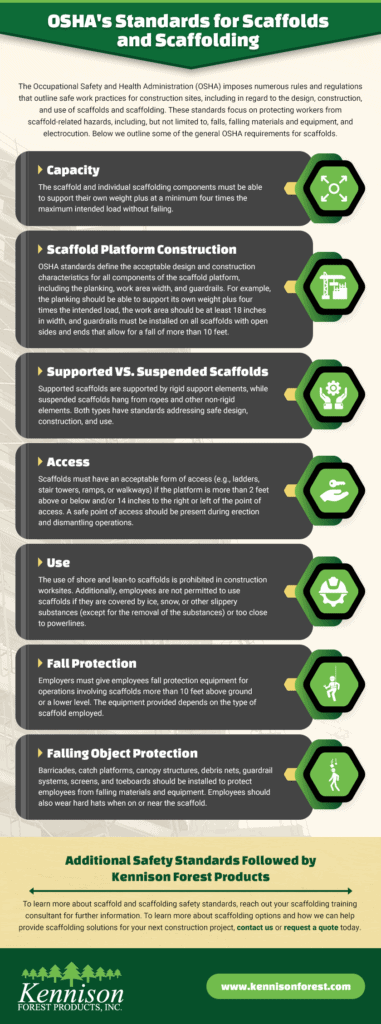In the construction industry, scaffolding plays a critical role in many worksites. The structures help establish safe working conditions for employees operating at elevated heights by offering support and stability to access and working platforms. However, aboveground operations also inherently carry a heightened risk of worker injury from falls and falling objects. In 2003 and 2004, the Bureau of Labor Statistics (BLS) reported 4,500 injuries and over 40 deaths were attributed to scaffold-related accidents. A more recent study indicated over 72% of injuries in scaffold-related accidents stemmed from faulty equipment, falling, or falling objects. The risk of these and other accidents occurring can be reduced by complying with scaffolding safety standards.
OSHA’s Standards for Scaffolds and Scaffolding
The Occupational Safety and Health Administration (OSHA) imposes numerous rules and regulations that outline safe work practices for construction sites, including in regard to the design, construction, and use of scaffolds and scaffolding. These standards focus on protecting workers from scaffold-related hazards, including, but not limited to, falls, falling materials and equipment, and electrocution. Below we outline some of the general OSHA requirements for scaffolds.
- Capacity: The scaffold and individual scaffolding components must be able to support their own weight plus at a minimum four times the maximum intended load without failing.
- Scaffold platform construction: OSHA standards define the acceptable design and construction characteristics for all components of the scaffold platform, including the planking, work area width, and guardrails. For example, the planking should be able to support its own weight plus four times the intended load, the work area should be at least 18 inches in width, and guardrails must be installed on all scaffolds with open sides and ends that allow for a fall of more than 10 feet.
- Supported vs. suspended scaffolds: Supported scaffolds are supported by rigid support elements, while suspended scaffolds hang from ropes and other non-rigid elements. Both types have standards addressing safe design, construction, and use.
- Access: Scaffolds must have an acceptable form of access (e.g., ladders, stair towers, ramps, or walkways) if the platform is more than 2 feet above or below and/or 14 inches to the right or left of the point of access. A safe point of access should be present during erection and dismantling operations.
- Use: The use of shore and lean-to scaffolds is prohibited in construction worksites. Additionally, employees are not permitted to use scaffolds if they are covered by ice, snow, or other slippery substances (except for the removal of the substances) or are too close to powerlines.
- Fall protection: Employers must give employees fall protection equipment for operations involving scaffolds more than 10 feet above ground or a lower level. The equipment provided depends on the type of scaffold employed.
- Falling object protection: Barricades, catch platforms, canopy structures, debris nets, guardrail systems, screens, and toeboards should be installed to protect employees from falling materials and equipment. Employees should also wear hard hats when on or near the scaffold.
For a more comprehensive outline and explanation of OSHA’s scaffold and scaffolding standards, check out their guide to Scaffold Use in the Construction Industry.
Additional Safety Standards Followed by Kennison Forest Products
In addition to OSHA standards, some companies—such as Kennison Forest Products—also comply with other industry standards when designing and manufacturing their scaffolding components to ensure the safety of their customers.
At Kennison Forest Products, we’ve supplied high-quality scaffold planks that meet and exceed industry standards for over 30 years. Due to their superior strength and durability, scaffolding companies and contractors across the globe know they can rely on our products for their needs. Our planks meet all applicable OSHA/ANSI requirements and are independent third party inspected.
To learn more about scaffold and scaffolding safety standards, reach out to your scaffolding training consultant for further information. To learn more about scaffolding options and how we can help provide scaffolding solutions for your next construction project, contact us or request a quote today.

